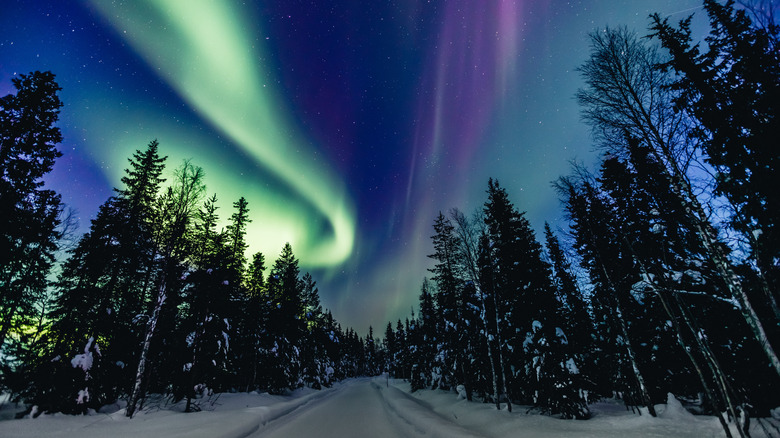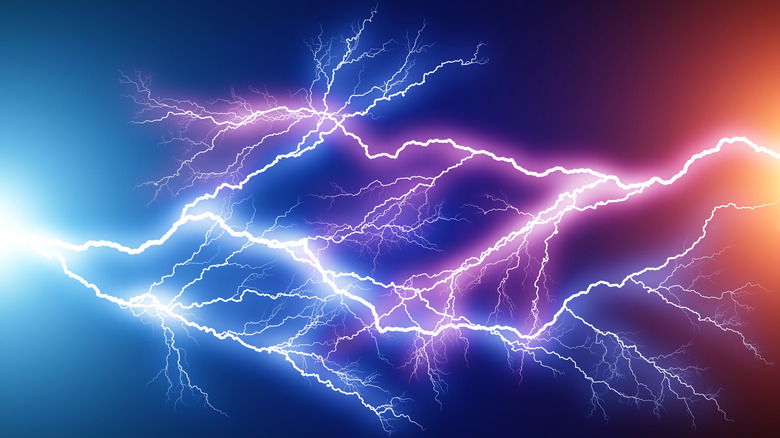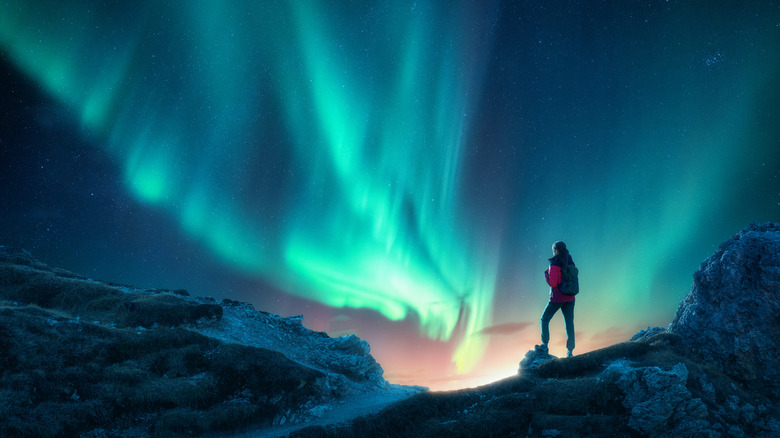Did You Know That Auroras Can Actually Make Sounds?
The aurora borealis develops after the solar wind — a stream of electronically charged particles that radiates from the sun — collides with the Earth's atmosphere. Depending on the space weather conditions, the northern and southern lights will have various colors — red, yellow, pink, green, blue, and purple. The strength of the solar wind affects the different types of northern lights (or southern lights) that form as well — arcs, bands, coronae, curtains, and rays. On top of that, research is ongoing to verify that auroras make sounds, too.
Myths and legends regarding the northern lights started with ancient civilizations because they didn't understand the science behind why they exist. Among them, some Native American tribes believed that the colorful streaks were torches that the spirits used to help recently deceased souls cross over from the abyss. They also believed that the auroras made whistling sounds to communicate with those on Earth.
With other tales of the northern lights making sounds and after hearing something for himself, professor Unto K. Laine of Aalto University in Finland formed the Auroral Acoustics Project in 2000 to determine if the sounds he and others have heard do, in fact, originate from the aurora borealis. In 2012 he presented a paper at the 19th International Congress on Sound and Vibration where he proved that the sounds people describe hearing actually happen during intense geomagnetic activity. In a YouTube video, you can hear one of the recordings made during the study, which pinpointed the dubbed "auroral sounds" at an altitude of 70 meters (230 feet).
How do auroras produce sound?
Continuing to record and analyze the sounds produced by the aurora borealis in Finland, Laine presented a paper in 2016 at the Baltic-Nordic Acoustic Meeting that illustrated how the noises occur in the temperature inversion layer of the lower atmosphere and are a result of discharging electrical charges. Temperature drops as altitude increases, Laine explained to Aalto University. In clear weather with temperatures well below zero degrees Celsius (about 34 degrees Fahrenheit), cold air is near the surface as warm air containing negative charges rises toward a colder layer of air containing positive charges. The inversion layer hinders the vertical movement of air, and during a geomagnetic storm, the accumulation of charges is released with sparks that produce magnetic pulses and audible sounds.
After even further study, Laine presented research in 2019 at the 26th International Congress on Sound and Vibration to demonstrate how the sounds from the northern lights are connected to Schumann resonances — low-frequency electromagnetic vibrations that occur around Earth. He noticed similarities between the rhythmic structures of the crackling sounds he measured and the Schumann resonances.
Talking to Aalto University, Laine said, "For the first time, such resonances have been found to activate the sound generation mechanism in the temperature inversion layer at altitudes of between 70 to 80 metres where the accumulated electric charges give rise to corona discharges and crackling sounds." In other words, these crackling sounds in particular are mediated not just by the solar wind, but by the local variations in the geomagnetic field.
Is it possible to hear the aurora without special equipment?
If you have a mind to, it's possible to hear the auroras without special equipment as long as the conditions are optimal. Choosing the best time to see the northern lights so that you can listen for them in person may be difficult to pinpoint, but not impossible. Generally, you want to choose a spot in the Arctic Circle that's as quiet and far away from noise pollution as possible, and go during the winter months for the best odds. Along with the temperature being below freezing, the weather needs to be calm and clear because that's when the negative and positive charges accumulate and discharge in the inversion layer. You may need to withhold your own "oohs" and "ahs" as well so that you don't miss the crackles, hisses, and pops.
However, you may be able to hear the auroral sounds even if you can't see the northern lights. Laine revealed in 2022 that he recorded hundreds of audible auroral noise candidates even when geomagnetic activity was too weak to produce the colorful light show. This further suggests that the sounds are linked to geomagnetic fluctuations and are more common than believed. It's just that people think the source is something else, like cracking ice or an animal.


